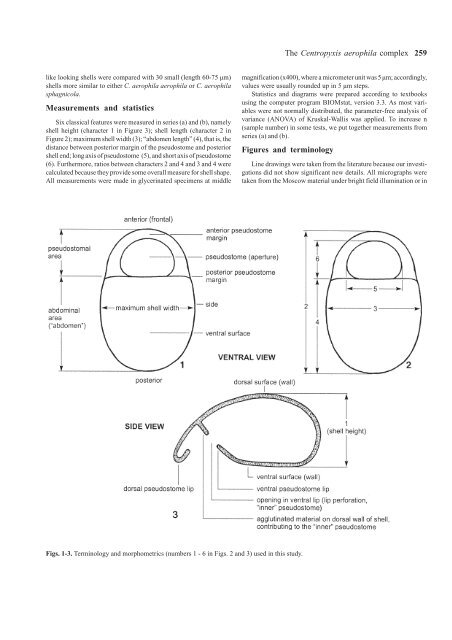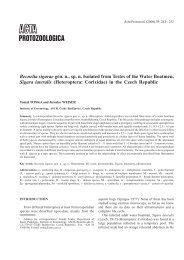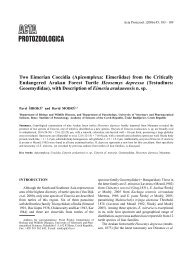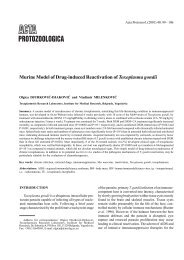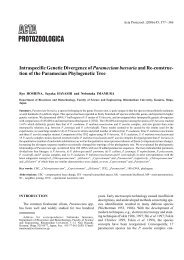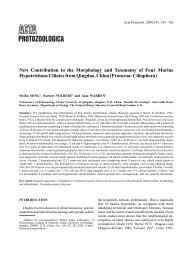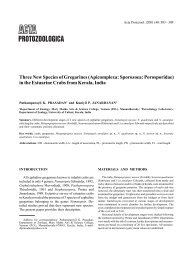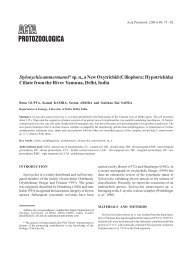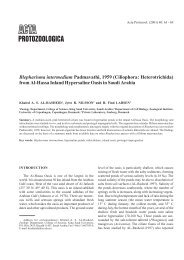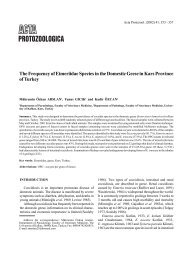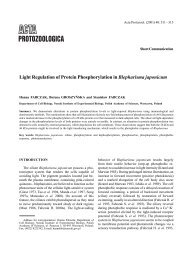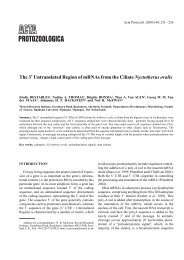The Centropyxis aerophila Complex (Protozoa: Testacea)
The Centropyxis aerophila Complex (Protozoa: Testacea)
The Centropyxis aerophila Complex (Protozoa: Testacea)
Create successful ePaper yourself
Turn your PDF publications into a flip-book with our unique Google optimized e-Paper software.
<strong>The</strong> <strong>Centropyxis</strong> <strong>aerophila</strong> complex 259<br />
like looking shells were compared with 30 small (length 60-75 µm)<br />
shells more similar to either C. <strong>aerophila</strong> <strong>aerophila</strong> or C. <strong>aerophila</strong><br />
sphagnicola.<br />
Measurements and statistics<br />
Six classical features were measured in series (a) and (b), namely<br />
shell height (character 1 in Figure 3); shell length (character 2 in<br />
Figure 2); maximum shell width (3); “abdomen length” (4), that is, the<br />
distance between posterior margin of the pseudostome and posterior<br />
shell end; long axis of pseudostome (5), and short axis of pseudostome<br />
(6). Furthermore, ratios between characters 2 and 4 and 3 and 4 were<br />
calculated because they provide some overall measure for shell shape.<br />
All measurements were made in glycerinated specimens at middle<br />
magnification (x400), where a micrometer unit was 5 µm; accordingly,<br />
values were usually rounded up in 5 µm steps.<br />
Statistics and diagrams were prepared according to textbooks<br />
using the computer program BIOMstat, version 3.3. As most variables<br />
were not normally distributed, the parameter-free analysis of<br />
variance (ANOVA) of Kruskal-Wallis was applied. To increase n<br />
(sample number) in some tests, we put together measurements from<br />
series (a) and (b).<br />
Figures and terminology<br />
Line drawings were taken from the literature because our investigations<br />
did not show significant new details. All micrographs were<br />
taken from the Moscow material under bright field illumination or in<br />
Figs. 1-3. Terminology and morphometrics (numbers 1 - 6 in Figs. 2 and 3) used in this study.


